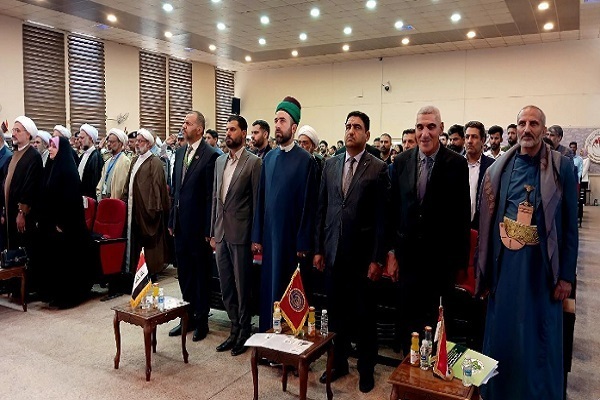AhlulBayt News Agency (ABNA): Iran’s Ambassador to Iraq Mohammad Kazem Al Sadeq described the annual Arbaeen march as an example of noble Islamic culture.
He made the remark in an address to the third international conference of “Husseini Ma’rifa (cognition) and Mission”.
The conference was held in the holy city of Karbala, Iraq, on Thursday morning.
Titled “Global Outcomes of Husseini Culture and Rituals”, the conference was organized by the Karbala Research Center (affiliated to the Astan (custodianship) of Imam Hussein (AS) holy shrine), the Iranian Cultural Center in Iraq, the Arbaeen International Foundation, the Iraqi Popular Mobilization Units (PMU), and the Karbala Academics Syndicate.
University scholars and thinkers from Iraq, Iran, Niger, Kuwait, Portugal, Afghanistan, Yemen and Syria presented their papers at the conference.
The papers were in Persian, Arabic, English and French, according to the organizers.
In his address, the Iranian envoy said the participation of millions of devotees of the Husseini (AS) culture in the annual Arabeen march should be made known to the world.
He said it is part of the rich Islamic culture that has many points of strength and should be promoted by all Muslim countries.
Arbaeen, hailed as one of the most substantial religious congregations on the planet, marks its solemn presence 40 days after Ashura, the observance commemorating the martyrdom of the third Shia Imam, Imam Hussein (AS).
Every year, during the Arbaeen season, a monumental throng of Shia devotees undertakes a profound pilgrimage to the city of Karbala in Iraq, where the sacred sanctuary of Imam Hussein (AS) stands. Drawing primarily from the regions of Iraq and Iran, these pilgrims embark on arduous foot journeys, traversing extensive routes to reach the sacred precincts of the holy city.
...................
End/ 257

